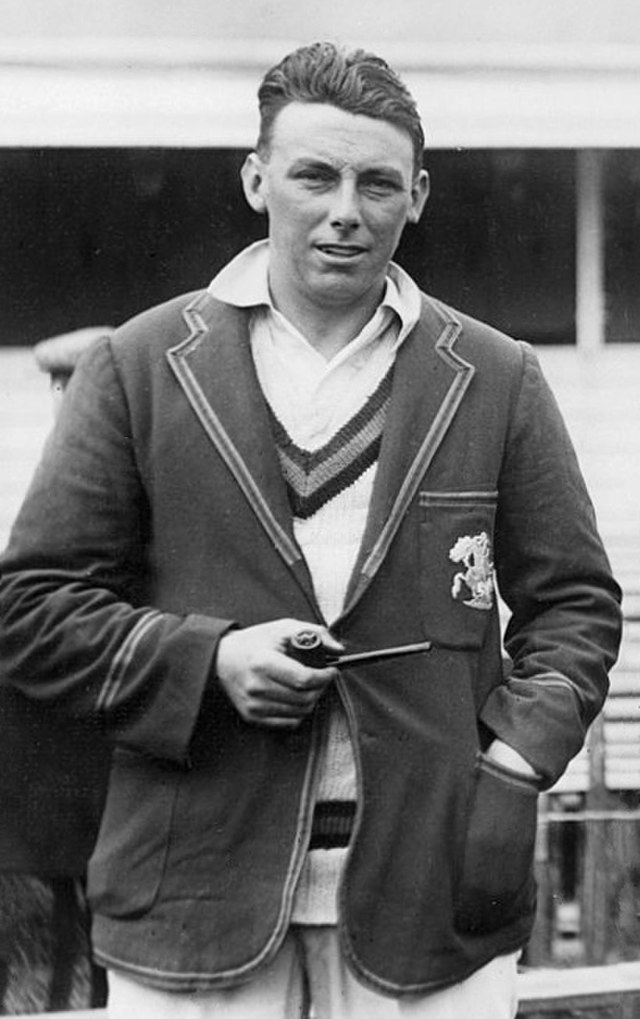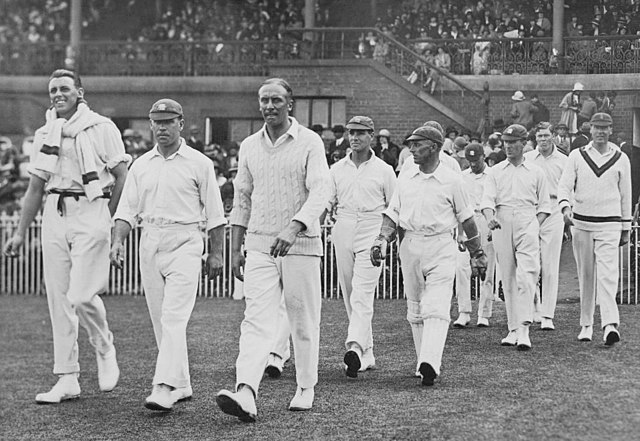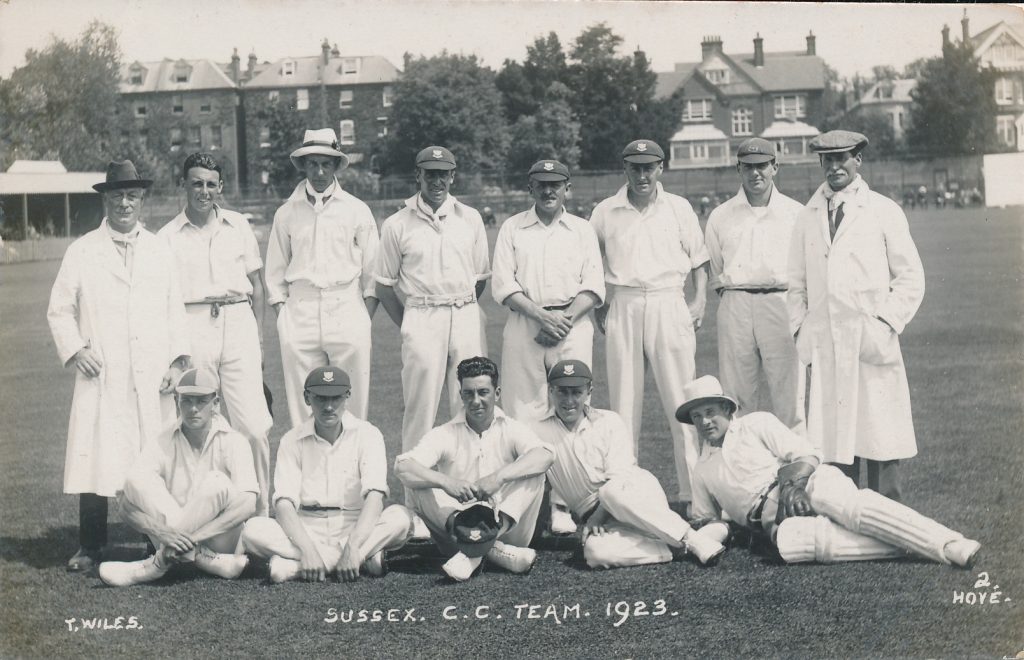Sussex’s greatest-ever all-rounder
Maurice Tate had a range of qualities: to some, he is Sussex’s greatest all-rounder, an incredibly rounded player who dominated with bat and ball in most games in which he played. To others, he is the greatest bowler the club has ever produced, achieving 2,211 career wickets for the club at an average of only 17.41. Others would simply say he is the finest player in Sussex history, from the days of Fry and Ranji to the likes of Goodwin and Wright. If you consult the Cricketer’s Jubilee edition in 1971, he is one of only nine players unanimously voted as the greatest of the prior fifty years, ranked alongside Bradman, Compton, Hobbs, Sobers and other illustrious company. All told, Tate’s career is one of unrivalled excellence in all facets of cricketing life: his successes for club and country are timeless, and reflect a truly gifted player, moulded by Sussex from the beginning into one of its most faithful and effective servants.

An inauspicious beginning
Born in Brighton in 1895, Maurice first played for Sussex in 1912. His career was inauspicious in the prewar years –in just thirteen appearances his figures were hardly those of a prodigy. His father, Fred ‘Chub’ Tate, a Golden Age bowler for the club of some repute, held out the belief that his son would play for England: this seemed a vain hope for much of Tate junior’s early life. The war interrupted his career and in the aftermath he very nearly left for Middlesex, but ultimately chose to remain at his home club. In 1921 he made a remarkable statement of his development as a batter, scoring 203 in a 385-run partnership with Ted Bowley against Northamptonshire. His bowling at this stage of his career proved reasonably effective but no more than that, with a technique relying on methodical off-breaks. It would take a fundamental change in technique to turn him into a truly fearsome all-rounder.
Sources vary on the moment when Tate’s breakthrough into fast bowling came: it was certainly in 1922, but some – including John Arlott and Jack Hobbs – believed it to be against Hampshire at Eastbourne, while Sussex captain Arthur Gilligan maintained it was in the nets. In any case, it was discovered that if Tate increased the pace of his bowling he could ‘nip’ the ball off the pitch, in a manner similar to his father but at a much faster and more deadly pace. A subsequent match against Kent saw him claim three wickets in four balls, with overall first innings figures of 8 for 67. A blistering period of form followed, with Tate claiming 527 wickets at 13.07 for Sussex between 1923 and 1925, and an additional two hundred across all matches including Tests in the same period – his first ball in Test cricket against South Africa in 1924 was a wicket, as he and Gilligan skittled the touring side out for 30 in an innings. His career blossomed and he became the pre-eminent all-rounder in the world, and but for an injury to Gilligan in 1924, he might well have helped Sussex secure their first County Championship, the same year in which Tate was awarded Wisden Cricketer of the Year. His new style has been described as one of the first innovations that led to the development of modern seam bowling.
Tate’s bowling action was the reflection of a unique athlete – his figure was described as a classic Sussex yeoman, broad and sturdy, and he was reportedly 15 stone at the height of his playing career. Such a powerful body lent itself to his unique action: he retained a six-stride run-up even as a quicker bowler, but each aspect of his body – wrist, arm, shoulder, back, waist, legs and feet – packed enough strength and endurance to generate thunderous pace off the pitch even with such a short approach. The rare footage we have of Tate bowling, unlike so much of classic cricket footage which can appear lacking in athletic prowess, shows every inch of exertion that went into his work. He could swing the balls both ways off the pitch with a high angle bounce, moving it sharply off the ground in a manner that, on almost any surface, was almost unplayable. Like his father, Tate was willing to endure and persevere through tough spells and toil away at his opposition when needed; Duleepsinhji, who captained Tate for some years at Sussex, noted once that he would never be able to ask Tate how he was feeling during a bowling spell, and so would simply observe the crease after a few overs – if Tate’s run-up spot had developed great gouged footmarks, then Duleep knew Tate was giving it his all, and the innings was in safe hands.

The most wickets in a single Ashes tour of Australia
Tate holds the record for most wickets taken in a single Ashes tour of Australia by an Englishman, having managed to achieve 38 wickets during the 1924/25 campaign. He achieved this remarkable record, held to this day, in spite of a debilitating toe injury – at one point during the first Test in Sydney he bowled fifty-five eight-ball overs, despite the risk that his toe would require amputation, and he had to endure two mid-match injections to keep the pain tolerable during his spells. He managed eleven wickets in that game, and five five-wicket innings hauls across the whole series: even after retiring hurt in the third Test, his record-setting tour could not be denied. His dedication and obstinate refusal to limit himself almost cost him his career, but instead earned him a record that will likely never be matched, and the respect and admiration of English and Australian alike. Across all Ashes tours he took 83 wickets, even as he played into the Bradman years – in Bradman’s first Lord’s Test, Tate managed to claim 6 for 89 including the crucial wicket of the Don. He also contributed 54 with the bat, meaning that along with debutant Duleep’s 173, the two Sussex players added 237 runs to England’s overall total of 435 – a pretty considerable achievement for a debuting batter and an all-rounder who had been playing since 1912. He was taken on the following Australia tour, but did not participate in any of the Bodyline Tests.
Across his whole career, Tate achieved many significant milestones with bat and ball. He took 100 wickets in a season fourteen times, and with his solid batting was able to score 1,000 runs in twelve seasons, doing the double on eight occasions. He took at least 100 wickets for Sussex in every season between 1923 and his retirement (other than 1933 due to injury), achieved 200 wickets and 1,000 runs for three seasons running between 1923 and 1925. His career stats in Tests include 1,198 runs and 155 wickets, while his career stats across all first-class games total 21,717 runs scored and 2,784 wickets taken – 17,086 of these runs and 2,211 of these wickets came for Sussex. He was the first professional player to captain the county, a serious endorsement of his achievements in an era when the gentleman player still dominated the hierarchy of English cricket.

A lack of respect shown to a legendary figure
Sadly, the end of Tate’s career for the club was marred by ignominy and a lack of respect to a legendary figure. Summarily dismissed in August 1937, Tate described the day as the unhappiest of his life, saying that ‘it was not so much what was done, as the way they did it’. At forty-two years old and naturally experiencing a decline in form that came with age, it was perhaps an inevitability he had simply not considered. After being sent on gardening leave, he was asked to play bwhen other players were injured. Nonetheless, a sudden dismissal of this nature for one of Sussex’s most faithful and successful players, a master of the game who had set records that would take decades to break and was beloved by fans across the county, was a bitter pill to swallow. Tate moved through several occupations post-career, including pub landlord, coaching and other odd jobs, before dying aged 60 in the Greyhound Inn in Wadhurst, the last of his pub ventures. The club, too late to fully repay him, erected the Tate Gates at the County Ground in Hove, which stand to this day. Marking the legacy of a true great of the club who embodied the spirit of resilience and good humour that permeates much of Sussex’s club ethos, these gates stand in tribute to a great man, who fulfilled his father’s dreams for him and more.
By Simon Edwards, October 2023
Further reading:
Parkinson, Justin, ‘Then Came Massacre: The Extraordinary Story of England’s Maurice Tate’, Pitch Publishing, 2013